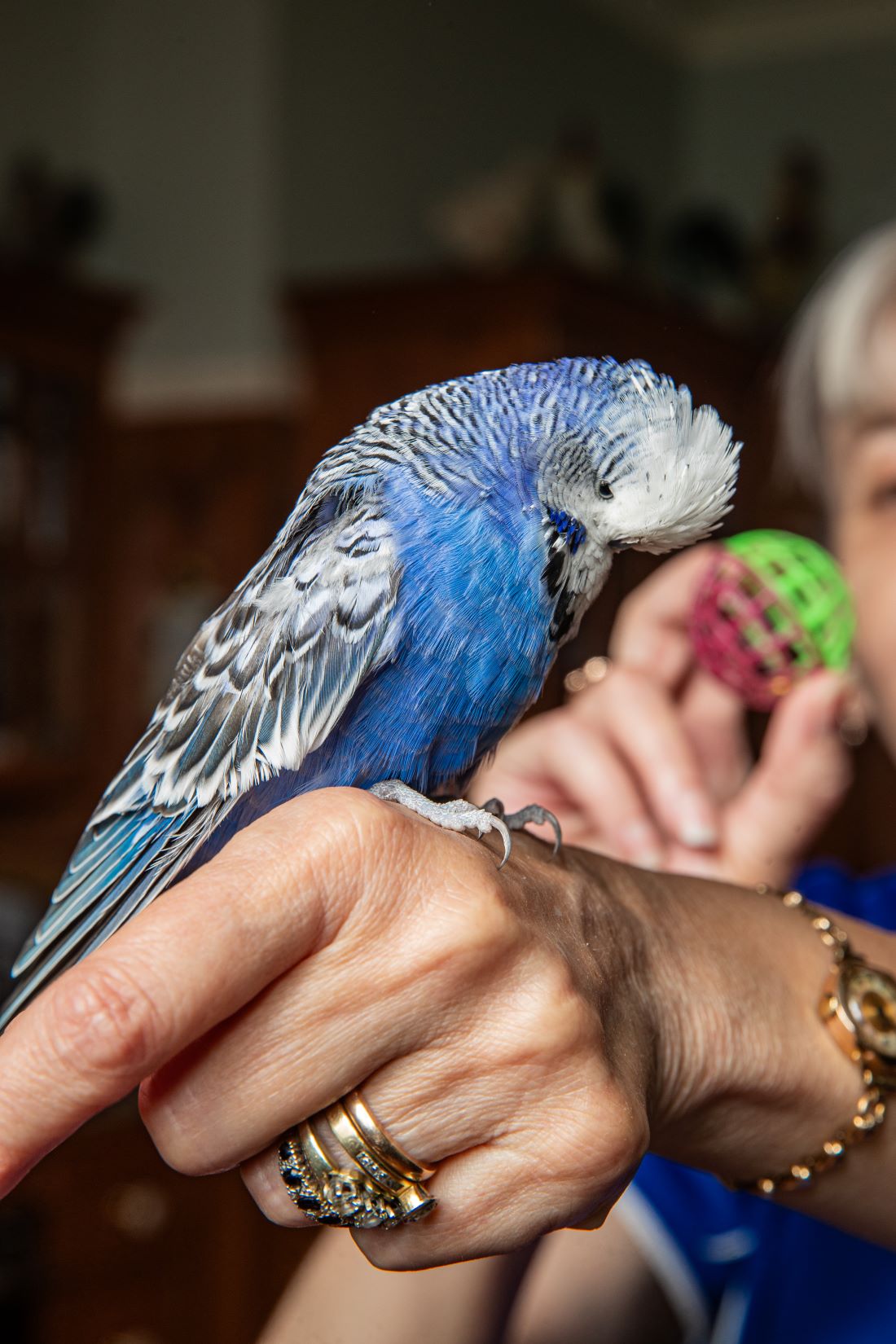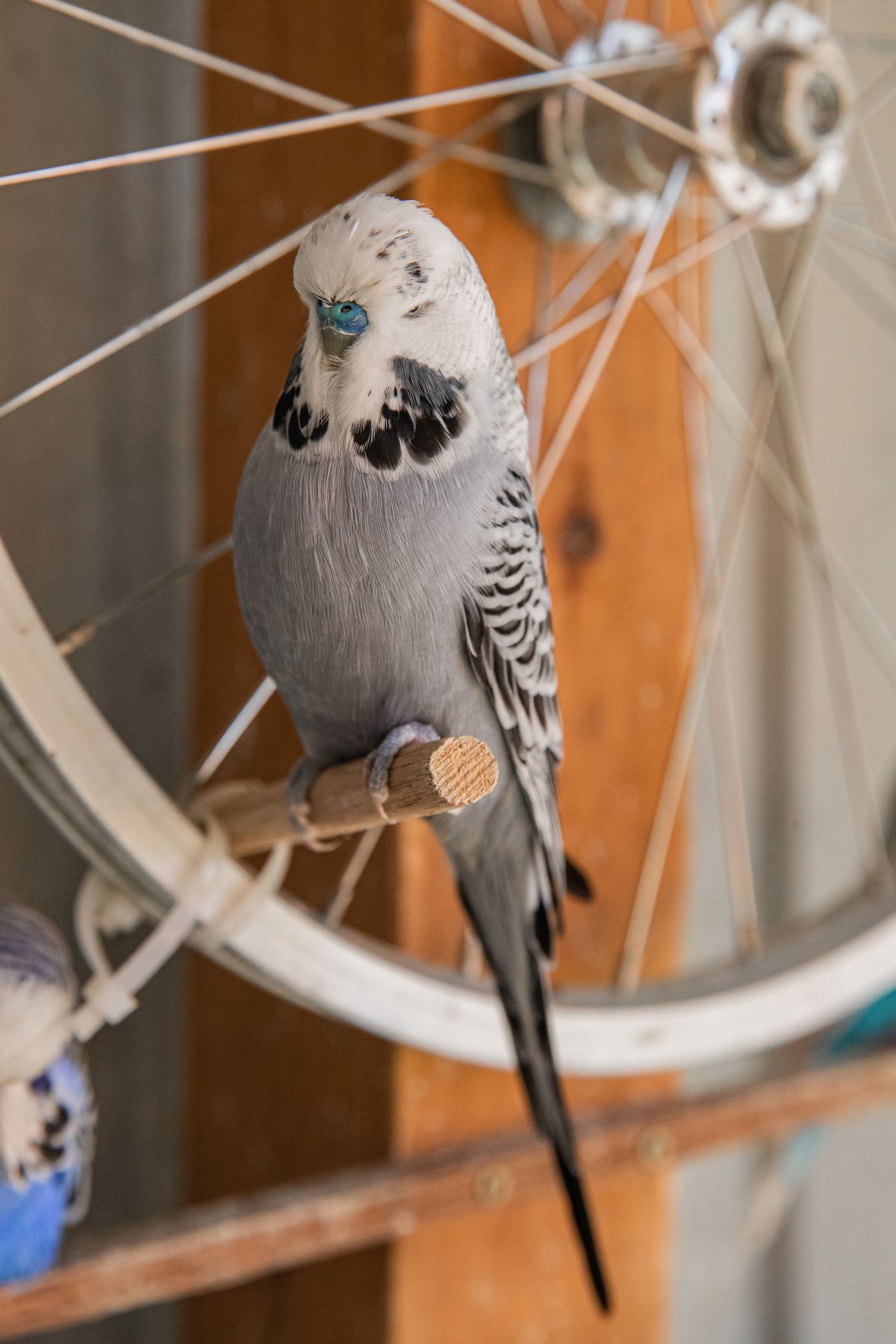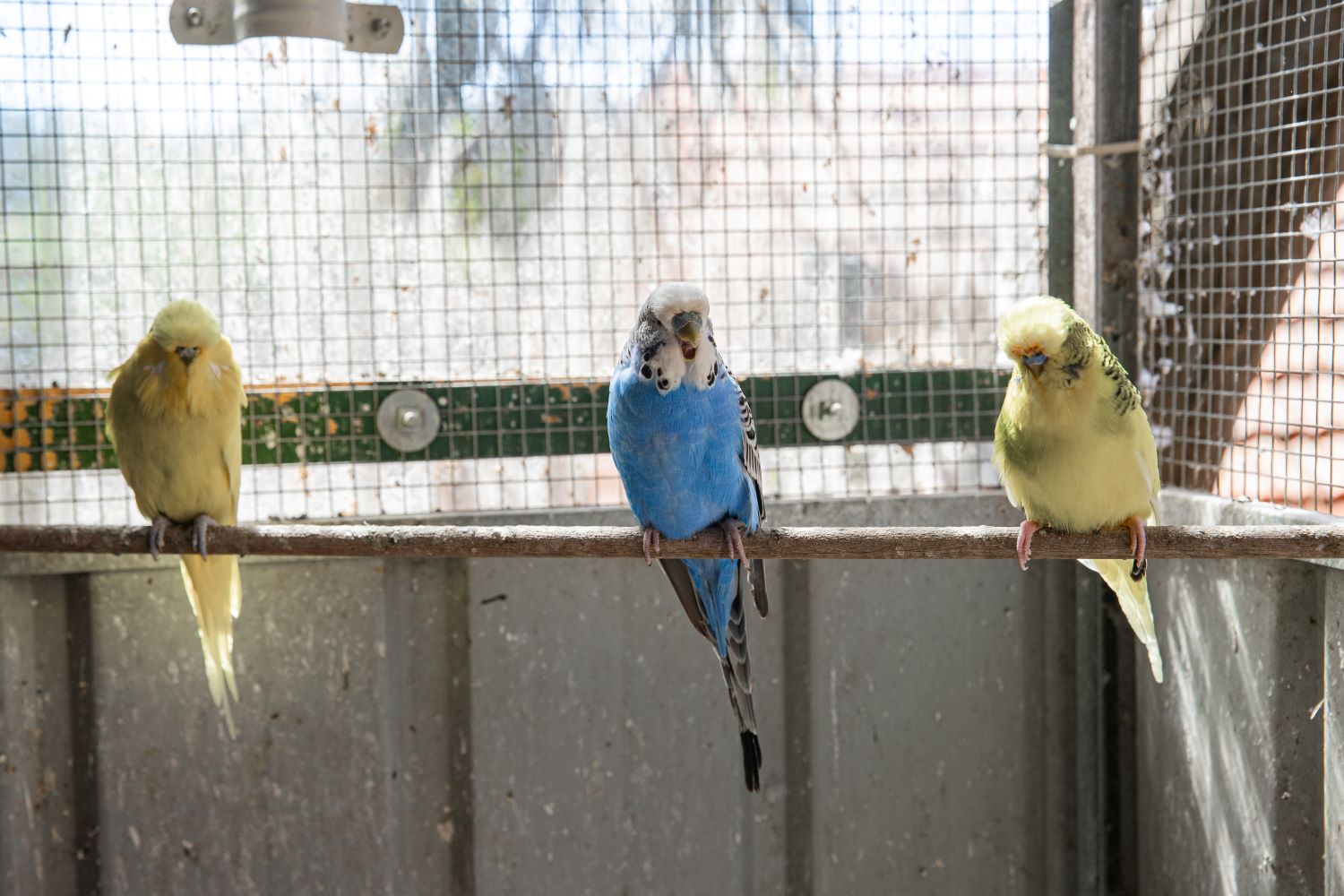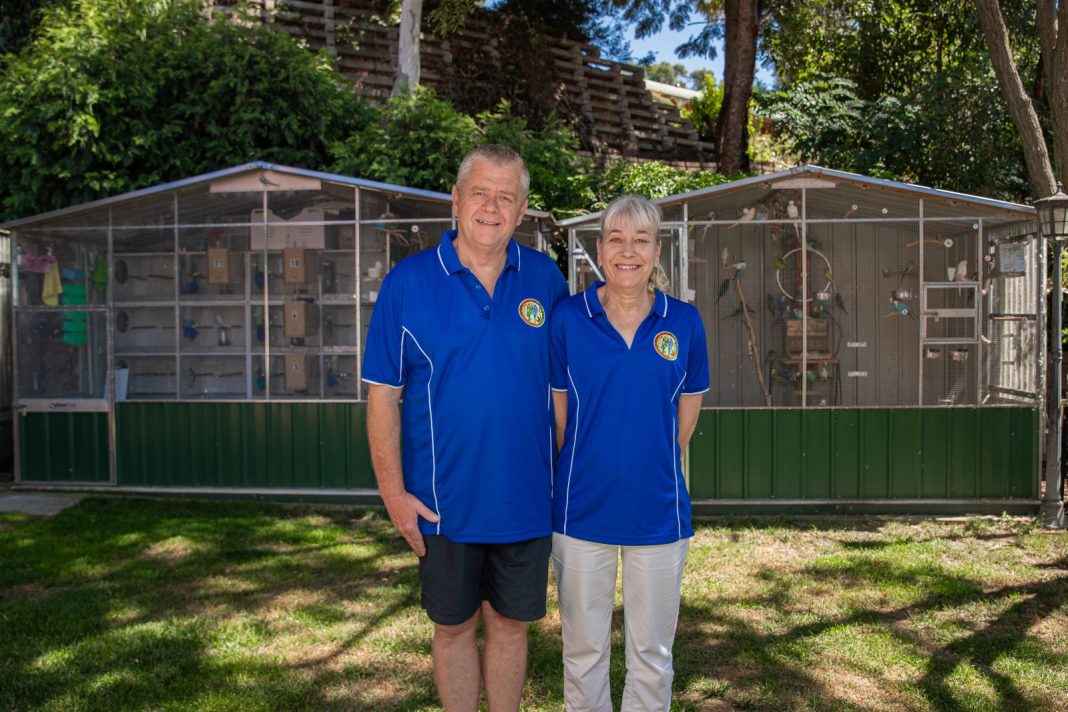There used to be a time when almost every house on the street would have a pet bird, often it would be the colourful budgie. For many, the appeal of these feathered creatures has never worn off. All across the Canberra region, budding budgie enthusiasts and long-time lovers come together in the Canberra Budgerigar Club.
The club went into a recession during the pandemic, now president and secretary Mark and Jan Wrate were approached to revive it. The pair had been members of a previous club related to the birds and were thinking about starting one up after retirement so decided to follow their dream a bit early.
“Because of Covid a lot of things had lapsed. It was a big job to get back all the paperwork, then to get people on board with the committee,” says Mark.
Launching last year, they started with a Facebook page that was originally meant to be for just sharing information. Soon, members started pouring in.
“We were amazed at how much interest there was in the little budgerigar. A lot of people had said it was a dying thing, people don’t want them anymore and nobody is breeding anymore,” says Jan.
“It was about educating the public; we were getting so many queries once people knew we were breeding birds on how to look after their pet bird and what to do when they got sick. There wasn’t anybody answering those questions,” says Mark.
Welcoming people from all levels of experience and interest, the club’s goal is to open itself to a wide audience of bird lovers, with some members not even owning birds.
“There were a few people there who wanted that inclusive club and that was the idea of the one we’ve got today. It’s inclusive and it doesn’t matter if they’ve got a pet bird or not, or if they’ve got 120 birds. There’s no animosity,” says Mark.
In the easing of the pandemic, they noticed more and more people were looking for a social connection with the love of birds being a common thread. People were interested in coming together, chatting and enjoying each other’s company.
“That then became the main driver – to have that social aspect of the club rather than looking at birds to breed or show,” says Mark.
Planning events a year in advance, the club tries to get together every eight weeks. Sometimes, meetings are held at an aviary or club member’s house. Other times, they mix it up with a visit to a local artist’s studio, who happens to be a member and budgie lover.
“Everybody brings a plate, we have lunch and sit down and have a chat, talk about birds,” says Mark.
“We wanted it to be interactive. We wanted people to talk to each other and share their experiences and it is working beautifully,” says Jan.


The broader community has also been on the mind of the club, particularly when it comes to raising awareness of health issues budgies can face. On their Facebook page, they noticed most people didn’t know how to help a sick bird or when to take them to the vet. To combat this, they plan to host several community-focused public education events, already hosting one with the Unusual Pet Vet.
“The common theme was, ‘When my bird is sick, what do I do?’ We thought there were two ways to tackle this. Most of the good breeders know when there is a sick bird, but the average person doesn’t know what’s wrong when that their bird is all fluffy,” says Mark.
The same story repeats itself with many pet budgies. During the pandemic, people bought the birds for company, but now that life has returned to normal, they no longer want or have time for them. Mark and Jan have seen this trend firsthand. Since relaunching the club, they have rehomed around 200 budgies.
“We have no problem rehoming. We just put the call out in our Facebook group and people can either bring the bird to us or we match them up to somebody who is on our list,” says Jan.
The native Australian bird is one of the most popular pets in the world, explains Mark. He says the cost of getting set up is low and they are often seen as a good starter pet for children.
“The only difference between a budgie and a goldfish is you can play with a budgie,” says Mark.
The smallest member of the parrot family, the budgie is smart enough to talk to its owner and can live anywhere between 5-12 years. The pair say while they seem like a perfect pet for little ones, their hollow bones can snap easily if they aren’t treated with care.
Growing up with birds herself, Jan’s father was a breeder, so she always kept pet birds. Mark and Jan decided to get into breeding themselves, starting with cockatiels before switching to budgies about six years ago.
“We started off with a small aviary, only had four or five budgies and it has blossomed to what is now, about 120,” says Mark.
Keeping one or two from each clutch, the pair’s bird numbers have been steadily growing. They choose which they keep for showing, breeding or personality.
“We can sometimes tell when they are babies which ones will make the better pet, some will become more humanised than others,” says Jan. “I know with Percy [pictured], when I was hand-feeding him, he was the one I was going to keep. He would almost run across to you.”
The pair are particular about who gets to keep one of their babies and have turned away people who are inadequately prepared or have the wrong idea about what they are getting into. Each buyer gets a tip sheet that outlines all the things their new friend needs, like housing, seeds, vegetables and toys.
“Even simple things like they don’t know you have to check their seed. People often check their seed and think that it is full, but it’s actually full of husks. The birds have eaten the seed, and the husk is still there,” says Jan.
Not everyone knows everything and that is why the club is a great option for anyone who has a bird. Mark says that some very experienced breeders are more than happy to share their knowledge.
“That’s part of being a club, you just teach them, offer that help, there are no silly questions,” he says.
Still calling themselves novices when it comes to showing their birds, they have the breeding down pat with boxes and sophisticated set-ups inside and out. They are also able to breed colourways to the trending preferences.
“The traditional colour was green and all of a sudden, the greens have faded out and everyone wants blues. Everybody wanted rainbows last year. It goes in fads; people always like the blues, whites and yellows,” says Mark.

The demographic of the group varies; young and old, employed and retired, all genders – everyone loves a budgie. One of the members is a retired scientist who has worked out a formula to fill calcium blocks with the nutrients a budgie needs to thrive.
“Members are going to help him put them together and he wants to donate all the profits back to the club,” says Jan.
Any profits the club makes go back into holding and hosting events for members and the public, which Mark says costs more than you would expect. However, they are committed to hosting fun and engaging events for the community, including their first official show under the new banner in October.
“There will be breeders from all over NSW and around 300 birds on show. There will be more for the public than just coming and seeing show birds,” says Jan.
“Our plan when we do these sorts of things, it doesn’t have to be 100 per cent about budgerigars; you could do a bonsai display or bring in another club,” says Mark.
Find out more by looking for Budgies of Canberra on Facebook.
Canberra Daily would love to hear from you about a story idea in the Canberra and surrounding region. Click here to submit a news tip.



